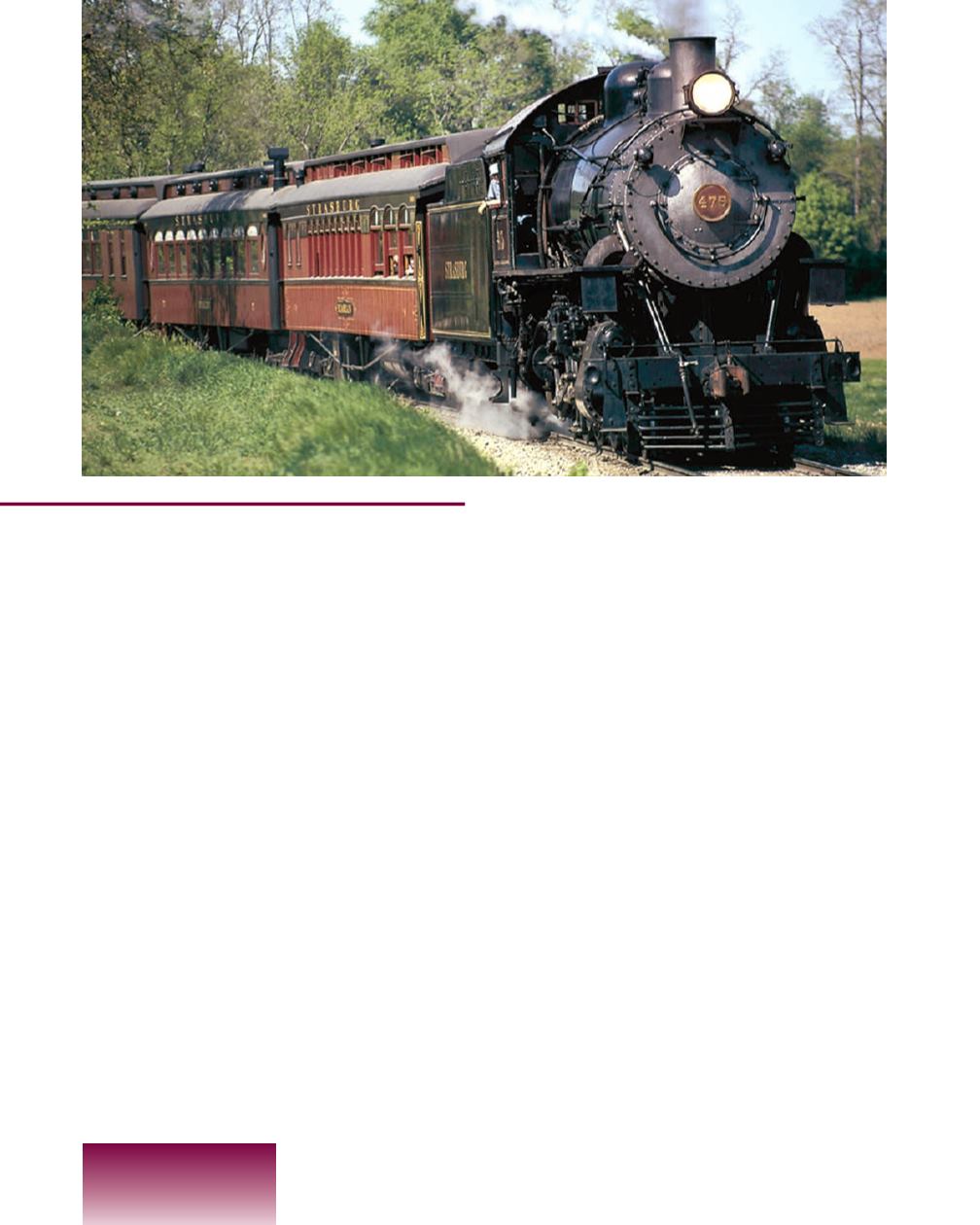
116
●
Chapter 7
River. It worked, but he did not make
money from this business. In1807,
Robert
Fulton
of Lancaster County developed the
first profitable steamboat. A steam engine
moved a paddle wheel on the boat. This
moved theboat through thewater. In1812,
Fulton built the
New Orleans
steamboat in
Pittsburgh. It chugged all the way from
Pittsburgh to New Orleans, following the
Ohio andMississippi Rivers.
This success caused Pittsburgh and
western Pennsylvania to develop a large
tradewith towns along the rivers. However,
Pennnsylvania’s transportation and trade
problems were not solved by steamboats.
Many of our rivers, such as the Allegheny
and Susquehanna, were too shallow for
steamboats.
Railroads
B
usiness people began to develop the
use of railroads in the early 1800s. In
1804,
Oliver Evans
of Philadelphia
invented and used the first steam
locomotive
in our state. It was a steam
engine placed upon a boat-shaped body
with wheels. It could travel in water or on
land! It worked, but people did not think it
could do anything useful. By 1809, railroads
operated without a steam engine. Wagons
were pulled over wooden rails by horse.
In 1829, the first steam locomotive to
run on American tracks was brought from
England. It was sent to Honesdale in
northeasternPennsylvania. However, itwas
too heavy for the wooden rails. Steam
locomotives had to wait for railroads to be
builtwith iron tracks. This began tohappen
in the 1830s.
MatthiasBaldwin
built the
first all-steam train in our state. His train
rumbled between Philadelphia and
Norristown at a terrifying speed of 16miles
per hour!
Railroad building became a big industry
during the 1830s. By 1839, travelers could
ride betweenHarrisburg andChambersburg
Railroads became big business in the 1830s.


